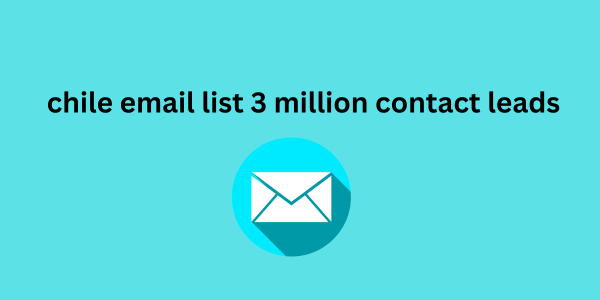Personalization has revolutionized e-commerce and changed online stores beyond recognition. This is especially true for email marketing, where only those who have managed to genuinely interest the buyer receive the coveted click. Therefore, today the success of a mailing depends largely on the segmentation of the customer base.
Want to significantly increase your mailing rates? We have prepared a detailed guide where we will tell you about all the intricacies of segmentation and tricks that you can use to make your work easier and please your client.
Why you need to segment your customers for email marketing
Segmenting your customers in your email marketing helps you speak to each person in their language. Instead of sending one email to everyone, you divide people into groups based on their interests or behavior. Here’s why it’s important:
- Offer what is needed . Knowing the interests of the client, you can send him a letter with a relevant offer. Someone values discounts on products that they have already bought, and for someone new products in their favorite categories are more important. This way, you hit the mark.
- Your emails will be opened more often . Personalized emails attract attention. If a customer sees that the message is related to their recent purchases or interests, they will open the email. This means that your emails will not be ignored or sent to spam.
How can you segment your database?
Knowing how to segment your subscribers will help you understand what data you need to collect. This will help you avoid wasting time and resources. Today, there are two main segmentation methods in the e-commerce world: by demographics and by behavior on the site.
However chile email list 3 million contact leads demographic data does not take into account the customer’s motivation. Today, users are more picky about their mailbox than they were 5 years ago. If a person regularly sees irrelevant offers, the store’s letters fly into the “Spam” folder.
You don’t have to choose just one segmentation method. You can combine demographic and behavioral characteristics and create your own unique campaigns. But before you start experimenting, you need to take care of the correct data collection. So it’s time to move on to the next step.
Step 1: Collect demographic data
The easiest way to learn more about a customer is to ask them. To do this, you can include mandatory fields in the subscription form. This can greatly facilitate segmentation at the early stages. However, you need to be careful: a large number of mandatory fields can reduce conversion. For starters, you can separate recommendations for men and women.
You can also launch a survey directly in the mailing list. The questions depend on your profile. Children’s stores can ask about the child’s age, and fashion retailers can find out the client’s favorite styles and brands.
Step 2: Collecting Interest and Behavior Data
We’ve covered the main ways to collect demographic characteristics. What should you do to get customer data for behavioral segmentation.
If desired, an online store can start developing its own data collection system, but this takes time and in most cases is not effective. Now it is much easier to track user interests through personalization platforms.
Each platform has its own advantages. For example, Retail Rocket automatically collects data on user behavior and interests without the participation of the online store using tracking codes. After some time, the marketer can simply select the necessary segment by interests in the platform panel.
Step 3. RFM segmentation for email newsletters
Using RFM segmentation of the base in email marketing helps to build communication with clients based on three parameters. Moreover building valuable links to a website recency (recency of purchase), Frequency (frequency of purchases) and Monetary (purchase amount).
The idea is that a more active customer is much more likely to make a new purchase than someone who made a single order a long time ago and for a small amount. Our platform supports automatic segmentation based on RF analysis. All users are divided into 7 segments depending on their activity on the site.
For each segment, we offer the optimal letter form and number of mailings. This approach will allow you to save money on clients who do not generate income and communicate more effectively with loyal users.
Step 4. Define the segment for the mailing
Once you have collected the data, you can start creating campaigns. We suggest you use the following criteria:
- The segment is formalized. It is easy to identify based on the data you have. The division can be based on demographic or behavioral characteristics.
- The segment is easy to differentiate. And to understand which recommendations are suitable for it. This information can be used for mailings on information occasions. For example, to make campaigns on the occasion of the opening of offline points in the region.
Maxidom Case: Comparison of Retail Rocket and Store CRM System
The Maxidom online store carries out segmentation both using the Retail rocket platform and in its own CRM system. But the CRM does not always contain up-to-date information and may not take into account those who have just begun to show interest in certain categories of goods.
Most often, the CRM system uses data on purchase history, but does not take into account the customer’s behavior in real time. The Retail Rocket platform segments based on current information: if a user has just begun to show interest in a category, he will be included in the segment.
Case “World of Food”: Segmenting the database by pets
We partially touched on this case above when we showed the markup with the survey. Clicking on the pet icon updated the subscriber’s properties. Segmentation based on interest in the product category was also used. Because shopping data any signal, whether viewed products or search queries, was taken into account when creating a user profile.
Currently, mailings of the online hypermarket “Mir Korma” provide on average 13-14% of orders and about 15% of revenue per month. Conversion in the email channel is almost 3 times higher than on the website.
Svyaznoy Case: Using RFM Segmentation
RFM segmentation is an important component in working with customer loyalty. This tool analyzes segment dynamics, identifies the most loyal customers and helps find points of tension in communications, as well as develop motivation for each segment.
Together with the online store Svyaznoy.ru, we developed a retention matrix and divided all customers into segments depending on the duration and frequency of purchases. To build individual communication with each segment, we prepared 9 RFM scenarios.

